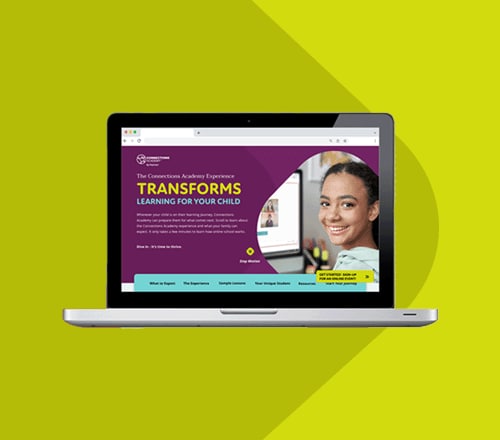8 Helpful Apps for Students with Special Needs
byAlyssa Austin
4 min to read
For students with special needs, school learning often needs a variety of supports to ensure proper comprehension and retainment. Luckily, with the development of helpful apps for students with special needs, there are more resources than ever for students with autism, attention deficit hyperactivity disorder (ADHD), and other disabilities to learn in a way that best complements their unique way of learning. Learn the benefits of incorporating apps for students with special needs, with eight suggested apps to try.
The Benefits of Apps for Special Needs Students
According to the National Center for Education Statistics, in the 2020–2021 school year, 15 percent of all public school students ages 3–21 received special education services, with “the most common category of disability [being] specific learning disabilities (33 percent).”
These 15 percent of students can benefit significantly from the use of apps for students with special needs, namely apps for students with autism as well as apps for students with ADHD. This is because the use of technology in special education can help break the barriers for students with special needs and provide them with access to relevant educational programs that are specifically designed for their unique learning needs. According to an article by eLearning Industry, the technology in these apps for students with special needs “helps provide students with individual learning events, [and] enables reaching higher flexibility and differentiation in educational methodologies.”
This creates increased feelings of autonomy and independence in students with special needs, enabling them to learn more effectively in their own style and at their own pace. It also can reduce the stress and anxiety that may accompany group learning for students with special needs.
4 Helpful Apps for Autistic Children
For students with autism, specialized learning apps can help them better absorb and understand curriculum. Check out these recommended apps for students with autism and autism-friendly learning.
1. Proloquo2Go
Proloquo2Go is an augmentative and alternative communication app designed for individuals who are nonverbal (including those with autism as well as Down syndrome, cerebral palsy, and more) to serve as a daily communication tool and to help build language skills. This paid app is available only through Apple/iOS.
2. ABC Kids – Tracing & Phonics
Ideal for early elementary school children, ABC Kids – Tracing & Phonics is a free Apple app that helps children learn to identify and sound out letters from A to Z.
3. Starfall
Another great free app for students with autism ages preschool to third grade is Starfall, which covers a range of subjects and developmental milestones that students can expect to encounter in school, all using engaging games, songs, and other fun digital activities.
iCan | Special Educational Fun
iCan is an educational app designed to help foster and develop “socio-emotional, self-care, cognitive, and academic skills” for students with learning disabilities. The app is available on iPad, iPhone, and Android, and includes versions for students ages 3–14. iCan is also an excellent app for students with ADHD.
Check out more suggested apps for students with autism, from Hopebridge
The Best ADHD Apps to Help Students Learn
Students with ADHD often have difficulty concentrating during school lessons and during homework time. They also may struggle to follow instructions or stick with tasks that require mental exertion interactive learning resource BookWidgets. Incorporating learning apps and communication apps for students with special needs can help students with ADHD perform at their best. Here are some great options:
1. MindNode
MindNode is an iOS app that can help students with ADHD better visualize their thoughts through the use of mind maps. These maps may be helpful for writing papers, staying organized, and anything else that requires organizing thoughts and large amounts of information.
4. Unstruck
Unstuck is a unique app that uses the power of cognitive behavioral principles to help students identify frustrations, problem-solve, and refocus on tasks.
3. myHomework
Students with ADHD may struggle to keep track of homework and school assignments, which is where myHomework can prove helpful. MyHomework is a free app that can be used to help students “track class schedules, homework assignments, and upcoming tests.”
4. Flashcards Deluxe
Studying for tests can be difficult for students with ADHD. Enter Flashcards Deluxe, an easy-to-use, customizable app that allows students to download existing virtual flashcards or create their own.
Every student is different, and learning is never a one-size-fits-all challenge. If you have a student with special needs, try out these apps to continue to find your student’s ideal way of learning.




